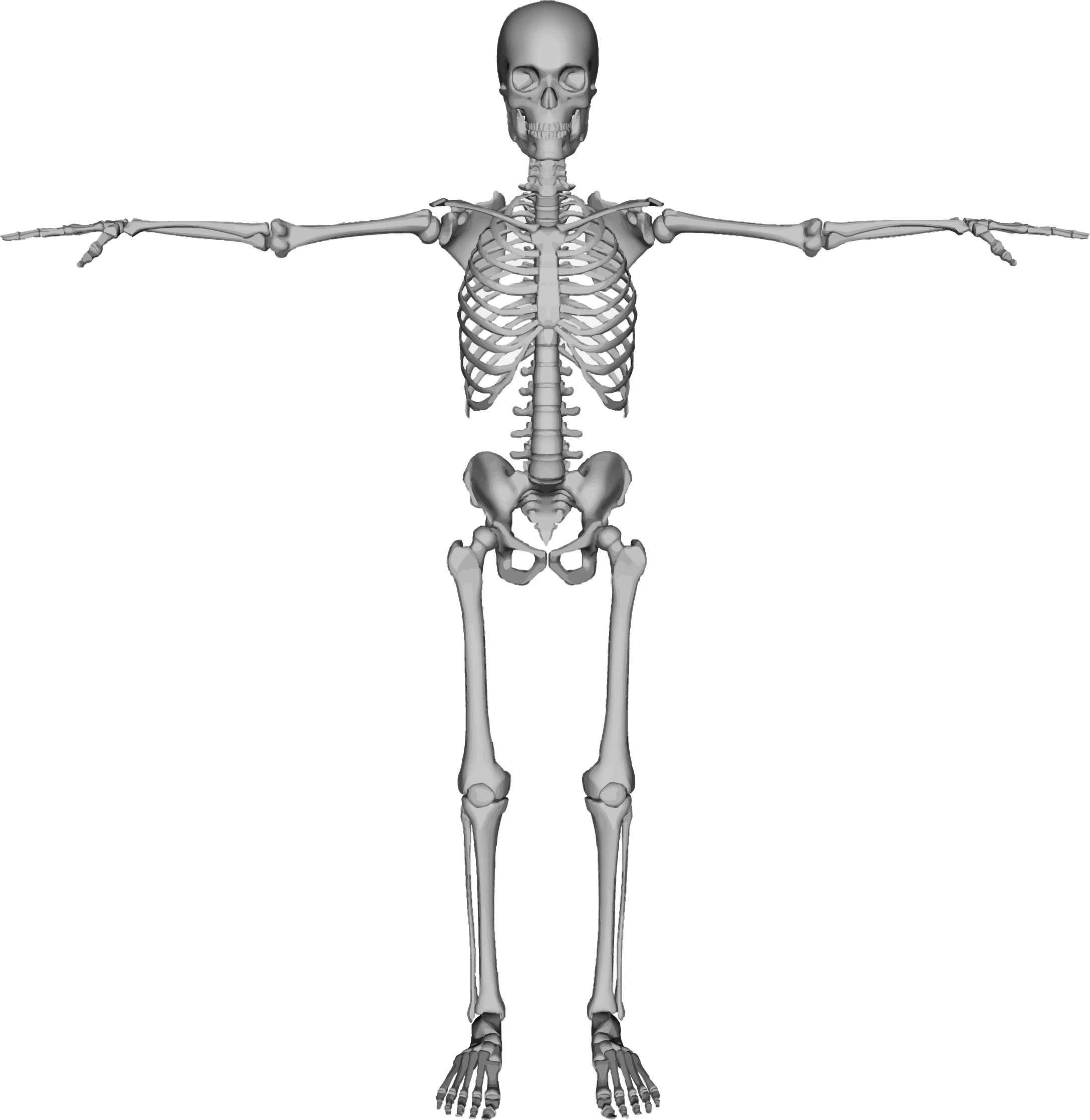When it comes to calcium more does not mean better. This may come as a shock to the millions of Americans who dubiously gobble down calcium supplements and tactfully wipe off multiple milk-mustaches daily. We are a culture that simply loves calcium- it is our glamorous “superstar” mineral with a name that rolls off the tongue. It has slipped its way into nearly everything from orange juice to glittering sugar-coated chocolate chews. Yet, contrary to the treasured conventional wisdom that calcium can single-handedly build strong bones, recent studies have shown that increasing calcium intake through supplementation has no significant effect on reducing the rate of fractures nor preventing the bone thinning disease osteoporosis. In fact, recent research released in a number of prestigious medical journals is revealing that improper supplementation with calcium is actually correlated with an increased risk for atherosclerosis and heart disease. Is calcium really the hailed bone-savior we have been looking for?
The Calcium Craze
With osteoporosis and low bone density afflicting nearly half of North Americans over the age of 50 and resulting in millions of fractures each year, it would seem as though something is failing in the modern lifestyle with regards to bone health. (1) Because calcium is the most abundant mineral in bone, experts initially deduced that rampant issues with bone thinning were related to a global calcium deficiency. Therefore, healthcare providers offered the obvious solution to the public of consuming up to 1,200 mg of calcium a day to remedy any underlying insufficiency. (2) With the technology to produce artificial calcium easily taken in pill form or injected into foods, getting more calcium into the Standard American Diet was no big deal. Bolstering calcium intake seemed it would provide an easy fix to compromised bones without asking drastic lifestyle changes of people. Not to mention this situation proved to be quite lucrative for the dairy and supplement industries. What an easy, wonderful bone mending strategy, right?

It turns out this logic might be wrong. Despite long-standing theories that calcium supplementation and fortification would work to single-handedly repair compromised bone, healthcare and government institutions are now meagerly admitting that this was not correct information. A series of studies has been released showing that supplementation with calcium alone has little effect on the strengthening of bones. Calcium therapies with complementary vitamin D proved to have slightly better results, however there was nothing in this data to make supplementing with this duo a valid choice for preventing fractures and osteoporosis. (3) Whatʼs more, isolated calcium supplementation has been shown to create other deficiencies in the body, causing the displacement of less common key minerals like magnesium. Additionally, and perhaps most alarmingly, excess calcium has been showing up where it shouldnʼt. Instead of being laid into the bone where it is needed to create durability and strength, calcium can become inappropriately deposited onto the smooth muscle walls of the blood vessels and the kidneys. (3), (4) In these vulnerable areas the mineral causes a predictable hardening and malfunction that is believed to be contributing to some of the nationʼs most dire health problems including renal distress and heart disease. Oddly, as these soft tissues become mineralized, bones continue to break down. Therefore we observe a very puzzling situation, what Dr. Kate RhéaumeBleue describes as “The Calcium Paradox:” a strange deficiency of calcium in the bones and excess in the arteries. Somewhere in our deductive-quick-fix approach to health, it seems we have gone very wrong. (5)
Linking a Fat-Soluble Trio: Vitamin A, D and K2
It is undeniable that our bones need the strong mineral calcium to be healthy. Calcium gives bones a hard exterior, providing anatomical structural support and also acts as a barrier to protect the delicate nerves and bone marrow encased within. But the true question is not a matter of how much calcium we need to consume, but rather how do we direct it to the bones? Studies are now finding that little talked-about fat soluble vitamins A, D and K2 may hold the answer. (6) Unlike other vitamins that act as co-factors to help proteins function, vitamins A and D are unique in that they actually regulate the activity of genes in cells to produce proteins. The particular proteins they work to synthesize are then activated by partnering vitamin K2 to become calciumbinders. Without these vitamin A, D and K2-dependent proteins, calcium cannot be properly used for bone remineralization. It is no wonder Dr. Weston A. Price called vitamins A, D and X (now known as K2) the “activators”. (7) They are absolutely essential to make use of nutrients like calcium.
Before further discussing the critical role of calcium and other nutrients in bone health, it is important to note that the bones are as dynamically growing and alive as any other body tissue. Bone tissue is constant changing through remodeling, an internal strengthening process that is ongoing from before birth to death. In remodeling, existing bone that is cracked or otherwise compromised from daily wear and tear is actually deconstructed and resorbed to make room for the formation of new bone. This renewed bone has a fresh supply of the hard mineral calcium, making it robust and resilient. The primary cells responsible for this bone maintenance process are specialized deconstructing osteoclasts and bone-building osteoblasts. These cells work closely to sequentially breakdown and create new remineralized bone, ultimately creating a strong and healthy skeleton over a lifetime. Maintaining appropriate ratios of osteoblast and osteoclast activity is absolutely crucial for the prevention of osteoporosis. Thus, it is evident that calcium is indeed of primary importance as a building material for the skeleton throughout life, yet it can only be used when other systems are also primed to work properly. (8)
Vitamins A, D and K2 work together in highly integrated, synergistic pathways to aid in the absorption of calcium. Their mechanisms are so intricate that they are still being actively researched today and largely remain a mystery even with the use of cutting edge scientific technology. However, to understand the basics about what scientists do know about this process, it is important to learn about the workings of two fat-soluble dependent proteins in the bone building process: osteocalcin and MPG. Together these proteins work to direct calcium to where it needs to go in the body.
- Osteocalcin is the second most abundant protein found in bones and teeth. It is synthesized by vitamins A and D, and secreted by specialized bone-building cells called osteoclasts to attract calcium to the bone tissues. Osteocalcin however is not ready for work upon production- its structure must first be changed to become calcium binding. This is the job of activator vitamin K2. Without K2, osteocalcin is useless and no calcium can be drawn into the bones where it is needed. (9)
- Matrix gla protein or MPG, is the important counterpart to osteocalcin. As osteocalcin pulls calcium into the bones, MPG draws calcium out of areas where it is not helpful, such as the soft tissues of the arteries. MPG production is also stimulated by vitamin D and the protein must then be activated by vitamin K2 before it can bind to calcium for removal. This chain of events for producing active MPG is of utmost importance for cardiovascular health, as scientists cannot currently identify any alternative pathways to preventing arterial calcification, the major precursor to heart disease. (10)
Therefore, although popular health institutions are slow to discuss the role of fat-soluble vitamins in relation to strong bones, they are undoubtedly essential to maintain a healthy skeleton. Perhaps it is time to shift perspective and start considering nutrient balanced whole foods like raw butter, instead of synthetic vitamins, as the key to optimal wellness.
Where Do We Go From Here?
While scientific information can be helpful in enlightening us on health topics, nobody wants to spend their days meticulously tallying off complex micronutrient ratios in fear of impending health crises. It is clear that calcium and fat-soluble vitamins A, D and K2 together are needed in properly balanced ratios to promote bone health. Although it can be difficult to figure out just what this means for our bodies, fearfully condemning calcium by eliminating supplementation and dietary intake in light of this knowledge is just not the answer. Regardless of how much calcium one takes, the crux of the issue resides in the amount of fat-soluble vitamins available to safely guide calcium into the bones where it is needed. An important step towards optimal bone health is thus to thoroughly consider sources of fat-soluble vitamins as they relate to dietary practices.
Ideally, a thoughtful, traditional diet rich in healthy fats, grass-fed animal products and organic seasonal produce from local farms would provide the entire spectrum of naturally balanced fat-soluble nutrients required by the body. The fat soluble vitamins are found largely in dairy, meat and eggs from pastured animals, as well as in specific superfoods such as natto (fermented soybeans). Dr. Weston A Price noted this in his luminary observations of the whole foods consumed by robust traditional cultures in the early 20th century. As detailed in Priceʼs book Nutrition and Physical Degeneration, the human body functions optimally when it reaps balanced nutrition from the rich foods of the land, clear sun exposure and pure replenishing waters as it was intended. However, in a modern society where foods have been harshly processed, soils ravaged and depleted, and water supplies sadly contaminated with toxins, making very conscious food selection and preparation choices is absolutely necessary. Not to mention, nearly 90% of our time is spent indoors in artificial environments without exposure to the lifegiving, vitamin D-producing energy of the sun. (11)
Under such circumstances, paying attention to the ways in which foods are handled is crucial. When searching for nutrient-dense meat, dairy and eggs, labels like “organic,” and “cage-free” are unfortunately not always enough to ensure that the livestock from which these products are derived were truly well-raised in sunlit pastures. Finding trusted local sources of grass-fed livestock and organic produce is helpful so that opportunities are available to visit farms and ask questions about the particulars of their farming practices. However, in situations where this is not possible, adding fat-soluble, vitamin- dense superfoods is also crucial in maintaining stable supplies of the now environmentally scarce vitamins A, D and K2. Superfood supplements such as cod liver oil, high vitamin butter oil and natto extracts are rich sources of these incredible nutrients.
A Balanced Approach
As evidenced by the story of calcium, although we all want a clear path towards health and happiness, there is truly no singular sweeping supplement to support health for all individuals across the life span. However, by using the knowledge that we have, it is possible to take initiative and responsibility for our own precious health and to find communities of individuals to support us in the process. Using a holistic perspective, we can find a balanced way to blend modern scientific data with the nourishing wisdom of our healthy ancestors and in this way live fully, vibrantly and sustainably to carve a path of wellness for generations to come.

